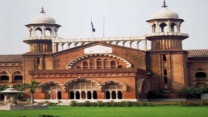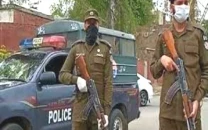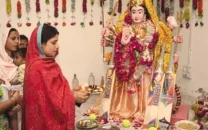Call for reviving ancient Gandhara university
Historians say Taxila should be given due attention to restore its lost glory

The revival of the proposed 3000-year-old Gandhara International University of ancient Taxila can make Pakistan a centre for interfaith harmony and a tourism hub for globetrotters.
The proposed revival of the Buddhist-era university of ancient Taxila had been designated a heritage site by the UNESCO in 1980.
Taxila, one of the most important Buddhist archeological sites in the world, is near the twin cities of Rawalpindi and Islamabad. According to historians, the ancient university was set up between 5th and 6th century (BC) and it attracted students from around the world until its destruction in the 5th century.
They said that Taxila, as a symbol of diversity, should be given due attention to restoring its lost glory. Therefore, the Buddhist archaeological sites of Dharmarajika Complex and Stupa can once again be made the centre of excellence in higher education by setting up an international standard university.
According to experts, Taxila has great potential for religious and educational tourism and could be made an international education city for higher education.
Punjab Archives Department Director Maqsood Ahmed said that Taxila, formerly Takshashila, was also described in the Buddhist Jataka tales written in Sri Lanka around the 5th century. In this text, Taxila has been mentioned as the capital of the kingdom of Gandhara and a great learning centre.
Read ETERNAL GANDHARA AND THE LEGACY OF INDUS
He said that the Chinese travellers like Fa Hian (Faxian) and Huien Tsang (Xuan Zang) also spoke of Takshashila in their writings. Many people visit Taxila today to experience the wonders of an ancient civilization, he added.
Maqsood Ahmed said that Taxila can be made a centre of excellence to attract foreign students, particularly from the sub-continent, Central Asian and other countries.” He said that the ancient university, which was a centre for education and knowledge, was established on the concept of creating a space where bright philosophical and scientific minds could assemble for advanced learning during the Achaemenid Empire.
He said that the oldest institution hosted debates, housed several libraries in its major premises and gave birth to towering scholars and intellectuals such as Kotliya Chankia, the advisor of the founder of the Mauryan empire; Charaka, the Indian “father of medicine”, one of the leading authorities in Ayurveda and the greatest 5th BCE Indian grammarian Panini.
Maqsood said that the Persian conquest has given the Taxila university a cosmopolitan environment in which many cultures and ethnicities could exchange their knowledge, adding that the role of ancient Taxila university as a centre of knowledge continued under the Maurya Empire and Greek rule (Indo-Greeks) in the 3rd and 2nd centuries BCE.
He said that when Alexander’s armies came to Punjab in the fourth century BC, Takshashila had already developed a reputation as an important seat of learning. Thus, on his return, Alexander took many scholars from there with him to Greece. “The final blow, however, came from the Huns (also the destroyers of the Roman Empire) who, in the 5th century, had razed the institution,” he added.
Abdul Nasir Khan, the library curator at Taxila museum, said that the students would come here from all over the world including China, Babylon, Syria and Greece and Indian Sub-continent for getting an education.
Published in The Express Tribune, September 27th, 2021.



















COMMENTS
Comments are moderated and generally will be posted if they are on-topic and not abusive.
For more information, please see our Comments FAQ